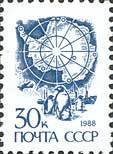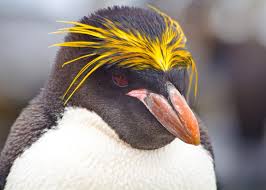Stamp: Map of Antarctica and emperor penguins (Soviet Union, USSR 1989)
Map of Antarctica and emperor penguins (Soviet Union, USSR 1989)
25 December (Soviet Union, USSR ) within release 13th Definitive Issue. goes into circulation Stamp Map of Antarctica and emperor penguins face value 30 Russian kopek
| Stamp Map of Antarctica and emperor penguins in catalogues | |
|---|---|
| Michel: | Mi:SU 6033 |
Stamp is vertical format.
Also in the issue 13th Definitive Issue.:
- Stamp - Post messenger face value 1;
- Stamp - Cruiser "Aurora" face value 3;
- Stamp - Spassky tower and Lenin's tomb, Red square, Moscow face value 4;
- Stamp - State flag and emblem face value 5;
- Stamp - Statue "The worker and the collective farmer" by Vera Mukhin face value 10;
- Stamp - Dish aerial "Orbit" face value 15;
- Stamp - Symbols of art and literature face value 20;
- Stamp - "The discus-thrower" (5th century Greek statue by Miron) face value 25;
- Stamp - Map of Antarctica and emperor penguins face value 30;
- Stamp - Statue "Mercury" by Giovanni da Bologna face value 35;
- Stamp - Great White Egret (Ardea alba) face value 50;
Stamp Map of Antarctica and emperor penguins it reflects the thematic directions:
A map is a symbolic depiction emphasizing relationships between elements of some space, such as objects, regions, or themes. Many maps are static, fixed to paper or some other durable medium, while others are dynamic or interactive. Although most commonly used to depict geography, maps may represent any space, real or imagined, without regard to context or scale, such as in brain mapping, DNA mapping, or computer network topology mapping. The space being mapped may be two dimensional, such as the surface of the earth, three dimensional, such as the interior of the earth, or even more abstract spaces of any dimension, such as arise in modeling phenomena having many independent variables. Although the earliest maps known are of the heavens, geographic maps of territory have a very long tradition and exist from ancient times. The word "map" comes from the medieval Latin Mappa mundi, wherein mappa meant napkin or cloth and mundi the world. Thus, "map" became the shortened term referring to a two-dimensional representation of the surface of the world.
Penguins are a group of aquatic flightless birds from the family Spheniscidae (/sfɪˈnɪsɪdiː, -daɪ/) of the order Sphenisciformes (/sfɪˈnɪsəfɔːrmiːz/). They live almost exclusively in the Southern Hemisphere: only one species, the Galápagos penguin, is found north of the Equator. Highly adapted for life in the ocean water, penguins have countershaded dark and white plumage and flippers for swimming. Most penguins feed on krill, fish, squid and other forms of sea life which they catch with their bills and swallow whole while swimming. A penguin has a spiny tongue and powerful jaws to grip slippery prey


